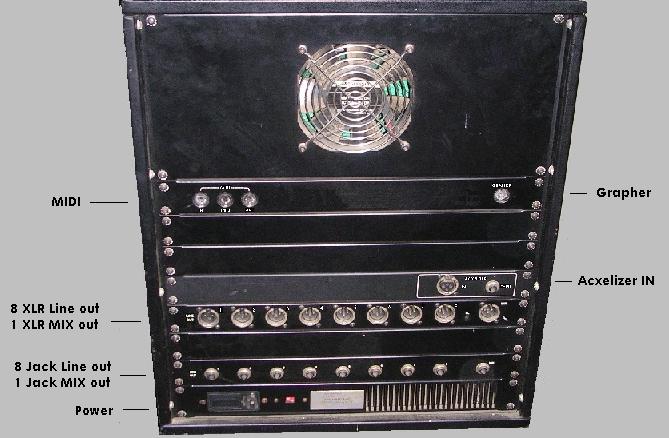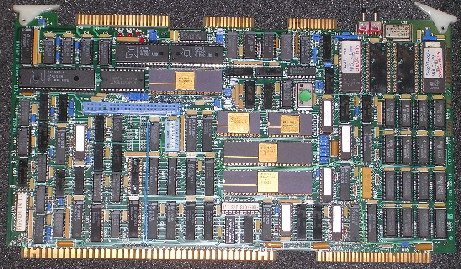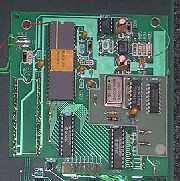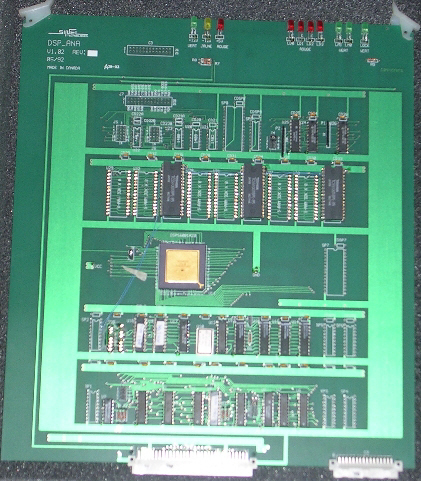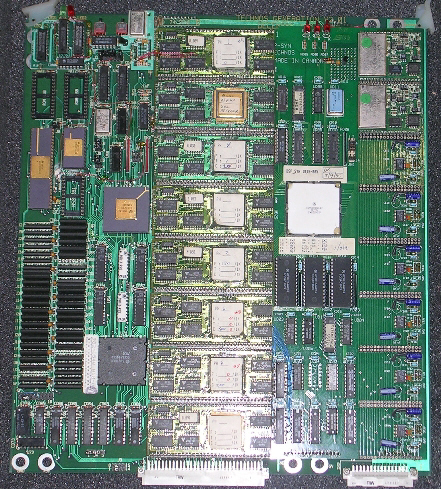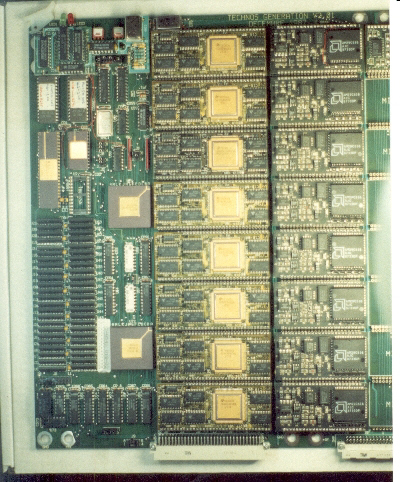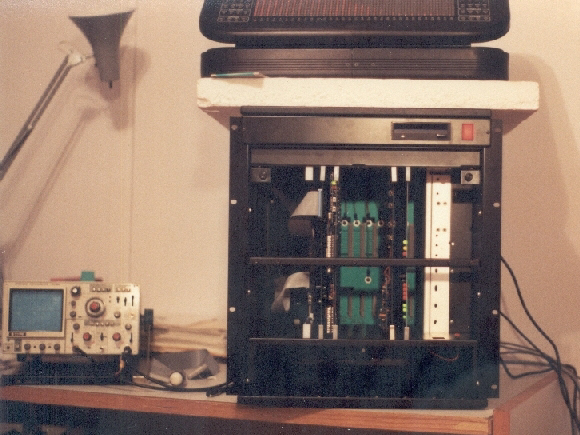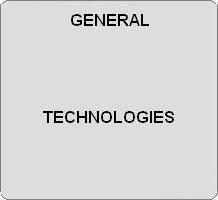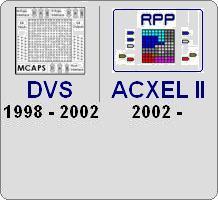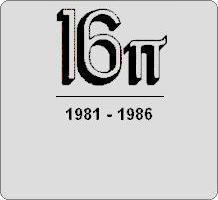Acxel System - Interconnects
(Solitary)
Photographs of Solitary Back - representing the various Audio Input-outputs and the Interfaces - MIDI, Console.
Multifunction board
This board acts as interface between the Solitary (Main unit) and the Console, the MIDI interface and the Controller for the 3 1/2 " Disk drive.
Master Processor board
The Master processor board is the only Acxel circuit bought in OEM (manufactured by National Semiconductor). The microprocessor is a NS32016 it was selected for its tremendous performances for the time, its symmetrical architecture and a development environment under Unix.
Acxelizer board (v2)
and Acquisition board
The Acxelizer board holds the same role as PAU of the 16p, in fact the sounds analysis for the resynthesis by Acxel, it introduces a more powerful processor DSP (DSP56001), the analysis programs were improved compared to the preceding versions.
The 16p concept, the realization and the manufacture of the 1986 and 1987 years called upon common assembly procedures. However the hardware remained highly complex, the manufacturing steps numerous and expensive, moreover the quality controls generated a very high rejection rate. In addition new more advanced techniques of assembly became available though not always mature, and the level of integration technologies ASIC allowed a great step ahead very promising for the performances, reliability and the costs.
The revaluation of the 16p generated an in-depth work on all the elements: Design, new functionalities, electronics, mechanics, thermal elements, sound quality and noise, ergonomics, availabilities of options, electronic integration, software development environment, perenniality, techniques of assembly and assembly steps, interchangeability of the components - modularity, quality control,
In September 1987 Acxel was presented in its known version and the production started at the beginning of 1988 with details of improvement throughout the year 1988.
Syncards
(versions 2 et 3)
Obviously the main part of original Acxel is its Syncard, the system could contain some up to 4, giving access to 1024 cells of synthesis (Oscillators) that is to say 256 cells per board.
The 8 modules vertically laid out with the board center, are the Harmonic Processors, they incorporate each one 2 specialized integrated circuits which we developed (ASIC). More details in page “Integration”.
Each Syncard comprises a 32 bits microprocessor (NS32016) with 1.5 MB of memory what was much for the time and memory management unit for inter processors (MMU), in addition to 2 other ASIC circuits which we carried out for the multiple bus system management.
On version 2 of the Syncard each harmonic Processor module is directly associated to a digital-to-analog converter (DA), the signals of 8 modules DA are mixed on the Mixer modules to manage the system outputs (1 to 8).
On the 3rd version of the Syncard a DSP (DSP56001) was added for the process of the outgoing signal from the 8 Harmonic Processor modules so as to redirect the signals more efficiently and to allow post-processing: Analog envelopes filters, and oversampling. New DA-Mixer modules.

